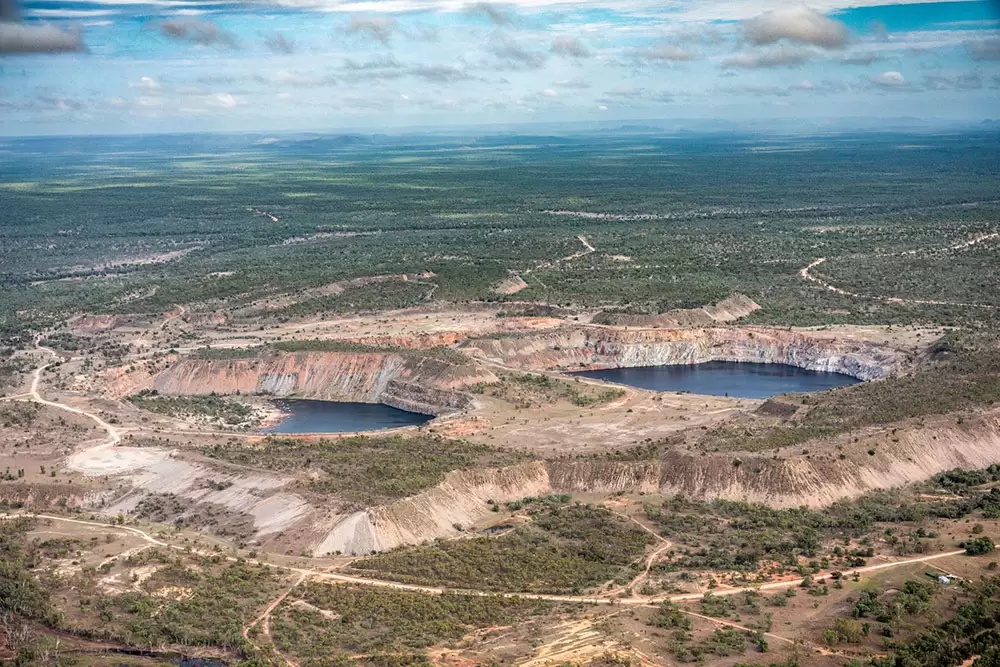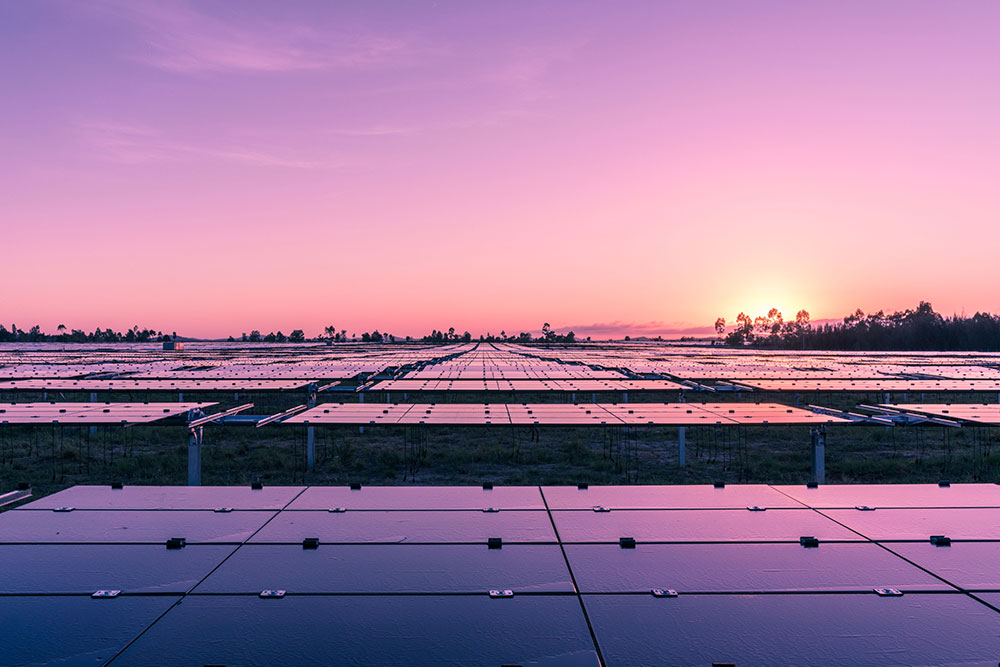Construction is underway on an innovative engineering project that will turn two retired mining pits in Queensland into a pumped hydro energy storage facility.
Led by Genex Power, the 250 MW Kidston Pumped Storage Hydro Project at the old Kidston gold mine, 270 km north-west of Townsville, is the first pumped hydro power station to be built in Australia in almost 40 years.
Planned for commissioning in 2024, the project will involve building an upper-level dam, or ‘turkey’s nest’, around the top of the uppermost mine pit. Water stored in this upper reservoir will fall some 220 metres down two vertical inlet shafts through reversible turbine-generators into the lower reservoir to generate electricity.
Energy Australia has entered into a 30-year offtake agreement with Genex and will sell the energy into the National Electricity Market.
The facility will have 250 MW generating capacity and energy storage capacity of 2000 MWh in the top reservoir. This storage equates to eight hours of generation at full load, or enough to power 143,000 homes. It will have a start up time of less than 30 seconds, allowing it to respond quickly to any shortages of electricity supply.
Engineers Australia Fellow Dr Ralph Craven FIEAust has been the Chair of Genex since 2014. As a young electrical engineer he was involved in the development of Australia’s last pumped hydro project, the Wivenhoe Power Station, in 1984.
Craven said the engineering challenges on such a unique project — which Genex describes as a world-first — are “quite extensive” but that the position and size of the Kidston mine pits made them ideal for repurposing.

“Wonderfully, the elevation of one of the pits is some 200 metres above the other, and they’re only 400 metres apart,” Craven told create.
“This meant we could configure a power station arrangement where you could run the water from the top with a natural head, through the power station and into the bottom pond and then pump it back up.”
The downside is there is currently no way of getting the energy to consumers. This will be addressed through the construction of a new 186 km, 275 kV transmission line between Kidston and a new switchyard at Mount Fox. This is east of Kidston and will connect with the existing Ross to Chalumbin 27 5kV transmission line.
“Having a 250 MW pumped storage power station right in the centre of the north Queensland network, connected by the new transmission line, provides additional system strength to the whole of the north Queensland transmission network,” Craven said.
“By providing this system strength, as well as voltage and frequency control features, the Kidston pumped storage hydro power station will enable more renewable projects to be developed in the north Queensland region.”
The pumped hydro facility is the centrepiece of what will become the Kidston Clean Energy Hub, which will eventually incorporate solar, wind and hydro electricity generation.
There is already a 50 MW solar project operating at the site, with a larger solar farm and 150 MW wind projects currently in the feasibility stages of development.
Tackling the engineering challenges
While pumped hydro facilities are already in operation around Australia – including the Snowy Hydro Tumut 3 power station, Shoalhaven Hydro in Kangaroo Valley and Wivenhoe Power Station near Brisbane – the Kidston Pumped Hydro Project is unprecedented in its re-use of retired infrastructure.
But this isn’t the only challenge. The project also requires significant underground infrastructure, including a large powerhouse cavern and waterway shafts and tunnels to transfer water between the upper and lower reservoirs to generate power during peak periods. The water will then be returned to the upper reservoir using reversible pump turbines when there is an abundance of low-cost renewable power.

“We have to pump out the majority of the existing water in the bottom pond so that we can build the water intake and exit infrastructure for the underground power station,” Craven said.
“It’s an engineering exercise in itself just to manage what we’ve got to repurpose and make the most of the opportunity.”
Genex Chief Operations Officer Arran McGhie has spent the majority of his 26-year career in underground mining, tunnelling and civil infrastructure. He said the placement of excavations, and in particular the location of the underground power station, was crucial to ensure the project avoided some major geological faults.
“Significant geotech investigations and the construction of a very detailed 3D Leapfrog geological model was required,” he told create.
The stability of the walls of the lower pond was also a potential issue.
“We had to work closely with our EPC contractor, McConnell Dowell John Holland Joint Venture, to derive construction methodologies to enable the scheme to be constructed from a single decline access tunnel, including the tailrace tunnels and portal structures,” McGhie said.
“This meant we could avoid undertaking extensive wall stability works around the entire lower reservoir.”
Despite, or perhaps because of, the vast challenges, McGhie said it is a privilege to be part of the Kidston project.
“The hydro project is totally different to any other project I have worked on as it brings together almost any construction methodology and engineering disciplines you care to think of,” he said.
“There are numerous engineering challenges, including the need to relocate 28 gigalitres of water from the lower reservoir to the upper reservoir to facilitate the construction of the underground power station and its entry and exit works. This is a major undertaking in its own right.”




Not quite the first check out Snowy 2. Maybe the first in Queensland.
Excellent innovative projects
An excellent article we are making progress with smart people
Hello Ruth, Your article is somewhat stale news and it has been preceded by some scathing articles concerning the astonishing subsidies necessary to make this project work. Also, while using old mine pits is a good idea, this one is not the first. Google Dinorwig power station for one old example.
There is a power line from Townsville to Kidston. Is this not suitable to send power out or do you need another line
Great idea for renewable energy. We should be repurposing those mines that are not suitable for pumped hydro to water storage similar to what Germany have done so that we can capture a lot of the run off and use for irrigation schemes as well.
Great article on a fantastic project Ruth.
Ian- Snowy 2.0 is not generating yet, so it’s premature to claim “not quite”. It seems we have a State of Origin situation here: which state will be first to generate power with pumped storage? It’s certainly David (250 MW/2000 MWh) vs Goliath (2000 MW/350,000 MWh) and NSW has a clear head-start, but don’t write off the late starter just yet. The sooner both projects are finished, the better off we all will be.